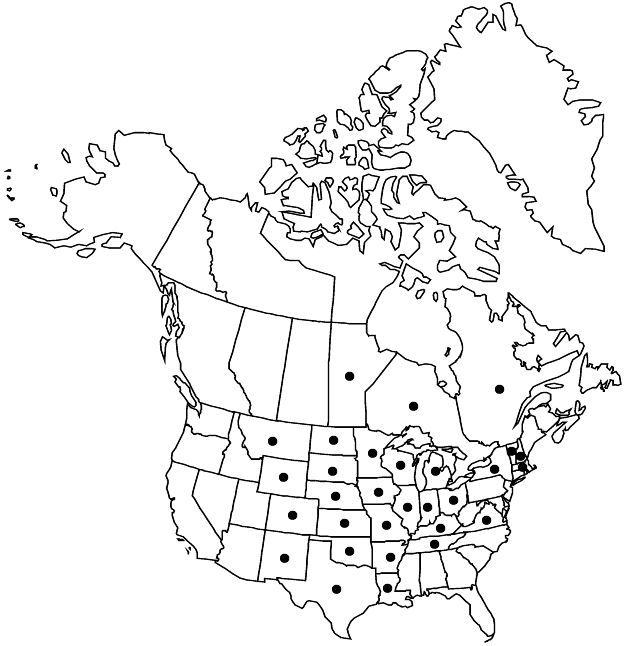Difference between revisions of "Ceanothus herbaceus"
Med. Repos., hexade 2, 5: 360. 1808.
FNA>Volume Importer |
imported>Volume Importer |
||
| (2 intermediate revisions by 2 users not shown) | |||
| Line 59: | Line 59: | ||
|publication year=1808 | |publication year=1808 | ||
|special status= | |special status= | ||
| − | |source xml=https:// | + | |source xml=https://bitbucket.org/aafc-mbb/fna-data-curation/src/2e0870ddd59836b60bcf96646a41e87ea5a5943a/coarse_grained_fna_xml/V12/V12_846.xml |
|genus=Ceanothus | |genus=Ceanothus | ||
|subgenus=Ceanothus subg. Ceanothus | |subgenus=Ceanothus subg. Ceanothus | ||
Latest revision as of 19:17, 5 November 2020
Shrubs, deciduous, 0.6–1 m. Stems erect to ascending, not rooting at nodes; branchlets green, brown, or reddish, not thorn-tipped, round in cross section, flexible, ± appressed-puberulent or villosulous, glabrescent. Leaves: petiole 2–6(–10) mm; blade not aromatic, flat, usually elliptic to lanceolate, sometimes ovate or oblanceolate, (20–)25–70 × 10–30 mm, herbaceous, not resinous, base cuneate to rounded, margins serrate to serrulate, teeth (37–)45–71, apex acute to obtuse, abaxial surface pale green, glabrous or puberulent, especially on veins, adaxial surface dark green, dull, villosulous or glabrate; 3-veined from base. Inflorescences terminal, umbel-like, globose to hemispheric, 4–8 cm. Flowers: sepals, petals, and nectary white. Capsules 3–5 mm wide, lobed; valves smooth, usually not crested, sometimes weakly crested near apex.
Phenology: Flowering Mar–Aug.
Habitat: Open rocky areas or on sandy soils, slopes and bluffs in shrublands, prairies, forests.
Elevation: 10–1800 m.
Distribution

Man., Ont., Que., Ark., Colo., Ill., Ind., Iowa, Kans., Ky., La., Mass., Mich., Minn., Mo., Mont., Nebr., N.H., N.Mex., N.Y., N.Dak., Ohio, Okla., S.Dak., Tenn., Tex., Vt., Va., Wis., Wyo., Mexico (Coahuila).
Discussion
Ceanothus herbaceus is an older name than C. ovatus, which has been used widely in botanical and horticultural literature (G. K. Brizicky 1964c). Plants with persistently puberulent leaves occur principally east of the Mississippi River Valley and have been called var. pubescens, but the extent of intergradation occurs over a broad geographic area and deserves further study (N. C. Coile 1988). Putative hybrids between C. herbaceus and C. fendleri in the eastern foothills of the Rocky Mountains were named C. ×subsericeus Rydberg.
Selected References
None.